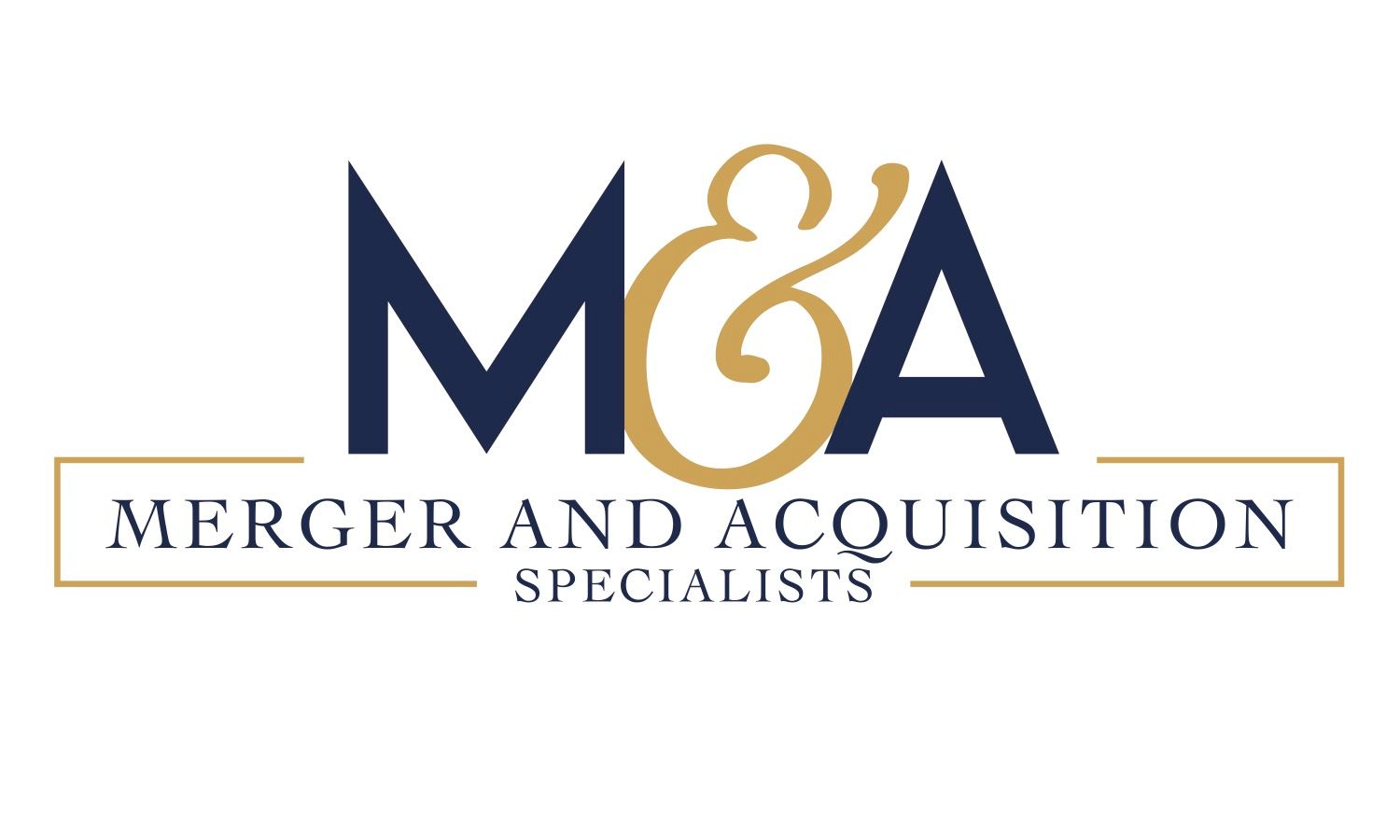BLOG
Blog
Merger & Acquisition Specialists

18 Jan, 2024
I love to fish. It is one of my true joys and passions. These days, I mainly fly fish for trout. But I also crappie fish on our reservoir right up the road. There are many different types of fishing. If you don’t want to fly fish, then you can spin-cast, jig fish, drag worms, fish a bobber, crappie fish with a cane pole, bass fish, brim fish, fish with a harpoon, spear fish, use nets, use fish traps, and more. The one thing all types of fishing have in common? You must know where to start to get started. This is certainly the truth for an acquisition search. The hardest part about looking for a business to buy is knowing where to start, and there is not necessarily a cookie cutter template of the “right way” to do it. There are two cliches, listed below in no order of importance, that can provide excellent guidance in this endeavor: Use the K.I.S.S. Method: Keep It Simple, Stupid. The journey of 1,000 miles starts with one step. Looking for a business to buy can be as simple as going to a website such as DealStream and searching for a business for sale that fits what you are looking for. Search by industry, type, or location; there are a variety of ways to search online for a business to acquire. This type of search is fairly easy to conduct. Go online, find a platform, and scroll through the listings. There should be contact information included on every listing. Find one of interest, obtain the contact information for that listing, then call or email your interest. But what if there are no opportunities that are appealing or meet your needs? At this point, the acquirer must conduct a targeted acquisition search. Why? Because the business you want to buy is not for sale. Be Focused and Keep It Simple This is a process. Begin by identifying motivation: Why are you looking to buy a business? Even if the buyer has inquired about a particular listing, I ask that question. It has been my experience buyers are often open-minded to opportunities, but also a bit unsure, or vague, in what they are looking for and why. Tip no. 1 on conducting a successful acquisition search is to be focused and keep it simple. Being focused does not necessarily mean knowing what you want to buy or even knowing what industry you want to buy in. Being focused applies to understanding your motivation and need for wanting to acquire a business. Being focused is completely understanding your why. For example, when asked why they want to purchase a business a buyer may say, “To be my own boss.” Another common reason, “To control my own financial future.” Both are very human reasons to buy a business. Both show motivation and need. But these answers do not help in an acquisition search. While showing true motivation, these answers lack focus. But that’s okay: The acquisition search is a process. Think of it as a crock pot cooking time rather than a microwave cooking time. It can take time to get good results. Part of that process is forming an understanding of what the buyer is looking for. Being focused and understanding motivation and need when it comes to acquiring a business starts with understanding what the buyer’s financial needs are from the business. This will identify the goal for the business. An acquirer needs to be detailed in what they need or desire out of the acquisition. Is it a life change in which the buyer is buying a job? Then the goal is to support yourself and your family. What does the replacement salary need to be? Can the business afford your current lifestyle? What can you realistically live on? If this acquisition is an add-on to an existing business, then the goal is growth. Acquisitions are the fastest way to grow your business and make more money. Is this acquisition an investment? Then the goal is return on investment (ROI), in which you don’t necessarily need to take money from the business on a monthly or yearly basis. The focus is more on return on investment over a certain period. Being focused on one’s motivation and need helps keep the search focused in the right direction. According to the Small Business Association’s Office of Advocacy, there are 33,185,550 small businesses in the United States . Any acquisition search is bound to turn up businesses! It is easy to get overwhelmed, distracted, sidetracked, and frustrated. But this is where the K.I.S.S. (Keep It Simple, Stupid) method is applied. The K.I.S.S. method focuses on the path of least resistance. This is a process. Begin by identifying motivation. The Journey Starts with One Step Once a buyer understands their why, the next step is to start the actual search itself. In fishing you need a body of water to catch fish. There are many bodies of water, so a fisherman must pick one and go to it. Likewise, in any search you need a pool to search from. Where are you going to start looking? This also ties into the acquirer’s motivations, needs and goals. Perhaps geography is not a big deal. If not, what is? What are we looking for? Where are we going to start fishing? Find the Fishing Hole If the buyer is acquiring a job and making a lifestyle change, then decide first if you want to relocate from your current residence. If not, then how far are you willing to drive to work? That is a big first step; many steps will spring forth from that answer. If the buyer is an investor, what part of the country do you like? If you’re looking for an add-on business, what market do you want to expand into? Geography is a big part of any acquisition search and a good place to start. It is also the easiest place to start. Often buyers want to search for a certain sized revenue and/or cash flow, but these are very difficult pieces of information to obtain with any degree of accuracy. Privately held companies and closely held small businesses do not have to publicly disclose financial information, number of employees, and other similar items like publicly traded companies are required to do. Consequently, revenue and cash flow numbers of small businesses are nearly impossible to find without obtaining the actual company financials. So cast a wide net first by using geography, it’s a tangible place to start one’s search. There are relatively accurate locations and address data easily available on privately held companies. Look for the fishing hole that fits precisely what you want from a location perspective. This is a great place to begin the journey, then narrow down with those types of qualification questions once prospects identify themselves. This is a process. Identify motivation. Identify location. Start Fishing When I arrive at my trout stream, I get ready to enter the water. It’s a process. I put on my waders, get my net, tie my fly, make sure my line is smooth and make sure the reel works properly. I prepare to begin fishing. When I conduct an acquisition search for a client, I do the same thing. We prepare our line and bait. In short, we form the list first. Once we form the list, we reach out to every business owner on the list. We do so in a variety of ways, including: three rounds of Direct Mail Email Campaigns Social Media Outreach Cold Calls It is not rocket science. To find a business for sale, one has to contact the business owner to see if they are interested in selling. There are a variety of ways to connect with people, and once the business owner has been identified, they need to be contacted. There are strategic ways to do so, and each method listed above has its own strategy. This is a process. Identify motivation. Identify location, identify businesses, and contact owners. Once the owner has been contacted and expressed an interest in selling, consider that a fish in the net. The next question is, do you keep it or throw it back? Is It a Keeper? In a very real sense, a successful acquisition search is a numbers game, like fishing. The more fish you get in the net, the higher likelihood of catching that monster fish. The same with a business search. The more business owners you talk to, the more likely you are to find that right business. Knowing the why and keeping it simple is critical at this juncture. As one encounters interested sellers, ask the pertinent questions based on what your motivations, goals and needs are. Keep the initial analysis simple. Screen businesses based on your criteria. For example, if you are buying yourself a job and not relocating, then your search has been local. Upon successfully getting an interested seller on the hook, then begin next level qualification (cash flow, employees, years in operation, etc.) by asking the pertinent questions. Conversations with the seller initially can be directed at a high level to obtain ballpark numbers. If, upon further discovery, the business produces $100,000 of cash flow after debt service, but you need $150,000 to support your family, then move on. Keep it simple: That business does not fit your needs. Do not try to fit a round peg into a square hole. Throw it back and go catch another one. This is a process. Identify motivation. Identify location. Identify businesses. Identify owners. Contact owners. Screen business. Is it a keeper? Catch or Release? If it’s to be, and the business is a keeper, then the search is finalized. Now the acquisition search turns into an acquisition negotiation, followed by due diligence . That’s a different game—it’s more like football than fishing. If it’s not to be, then the search continues. Move on to the next candidate. A good acquisition search is a process that follows a plan and has a model but is still flexible enough to remain open to any possibility. The plan and model should be one which can be applied and reapplied for any acquisition search, for any type of business, for any type of buyer, anywhere in the world. The foundation of this plan and model are best grounded in the concepts of being focused, keeping things simple, and taking action. Do this, and the odds are in your favor. Good luck. SHEP CAMPBELL SR. BROKER, MERGER & ACQUISITION SPECIALISTS

12 Dec, 2023
I have been skydiving twice. Both times in Lompoc, CA. The Pacific Ocean spread out to the west, and a valley floor of colorful flowers below. I jumped out of an airplane at 18,000 feet and it was exhilarating. I loved it. Tom Petty’s Free Falling was the background music on the video DVD I ordered for $30. It was awesome. For those that enjoy thrills, skydiving is a must. For those seeking to sell their business and retire, I do not recommend the skydiving method of retirement. What do I mean? Well, when I jumped out of the airplane I yelled, “Geronimo!!” It seemed appropriate. For business owners ready to sell their business without doing any Exit Planning, its the same thing as skydiving. By listing your business with the intent to retire, but with no planning on the front end, you are yelling, ‘Geronimo!!’ as you jump out of the airplane. The main difference is I had a parachute. You will not. Consider the chart below: A staggering 90% of business owners have no formal retirement planning prior to listing their business. This is even more staggering when one considers that retirement is the number one reason by a long shot for selling - across the value spectrum. Over a survey of 296 closed transactions ranging from <$500k to $50mm, retirement was the number one reason for selling regardless of the deal size. Anywhere from 39% to 68% of sellers list Retirement as why they want to sell. Yet, despite the ever growing numbers of retirees, business owners across the board favor the Geronimo method of exit planning and neglect preparing for this momentous, life changing event. The primary risk with the Geronimo method is the value of the business is not enough to meet the seller’s needs to complete their retirement package. On average, 70% - 90% of a small business owner’s net worth is tied up with the business. It is an integral part of the overall retirement package. The seller must get a certain amount for the sale of the business, or, the seller is unable to retire thus unwilling to sell. As a business owner meeting with your team of professionals to plan will ensure you not only secure your financial future, but maximize the value of your business. I tell owners to go visit with a broker 2-3 years out from selling. A good firm will form a relationship with you knowing you could be a potential future client. A great firm will give you tips on how to increase the value of your business in the next 2-3 years to get what you need. The firm that goes the extra step on the front end, is the firm you would be wise to hire when the time is right to sell the business. Also, plan with your financial advisor. Know where you are now, and what you need to retire. Have a road map on how you plan to achieve those goals. Your financial advisor is the expert in that category. Preparing on the front end by have a strategic exit plan will protect your financial legacy. You will secure your financial future, maximize your business’ value, and be able to skydive into retirement with a parachute. Otherwise, you are just screaming “Geronimo!”. Good luck. Shep Campbell C: (870) 450-3734 Merger & Acquisition Specialists

10 Nov, 2023
While one cannot predict the future, there are two trends occurring right now that would seem to be very important for the next five years in regard to business sales and M&A. These two trends deal specifically with supply and demand - a basic economic concept which most certainly plays into business sales and M&A. The first trend is a movement out of corporate America. These are first time buyers looking to buy themselves a job. A recent survey of 700 buyers showed nearly half were first time buyers looking to buy themselves a job “to be more in control of their future”. These buyers are looking to replace an income, and oftentimes industry is less important than cash flow. These buyers also usually have big retirement accounts, many of which can be tapped into via plans, such as the BORSA Plan, which enable buyers to access these funds without any penalties or taxes whatsoever. They have cash and cash equivalencies to purchase a business. A second trend has to do with Private Equity groups. PEGS and PIGS are typically high net worth buying groups which acquire due to synergistic and strategic reasons. They have liquidity, lending connections, and do not seek to run the daily operations. Private equity deals have moved down the food chain to incorporate more and more Main Street and Lower Middle Market sized transactions. I consider Main Street deals to be those valued from $0 - $2mm. Lower Middle Market deals are those valued from $2mm - $50mm. One can subdivide each segment. These smaller deals have become easier for PE firms to finance. There are more of them available to pursue. And with the adoption of an “add-on” strategy, PE will look at deals nearly any size. By add-on, we mean a business that would synergistically add-on to an existing bigger business and add value overall. PE groups love add-ons to their existing platforms. Usually these groups desire existing management to be in place; or for the seller to stay on and continue to run the business. Perhaps this increased PE activity in the $5mm - $50mm range is part of the reason Median Multiples in this range have gone up So if the buyers are there, then what are they buying. What can you do now to position yourself to capitalize on this movement? I think you need to focus on 3 specific industries. Broadly speaking these would be: 1. VMS (Vitamins, Minerals & Supplements); 2. Manufacturing (including certain Fabrication); and 3. Construction/Construction-related. Now, E-Commerce is without a doubt one of the hottest and most profitable industries. I intentionally left that off because it is captured by VMS. E-com is profitable, but competitive and needs a solid, proven product to garner the highest valuations. Within VMS you bring in that E-Commerce component. What is interesting about this industry is you typically encounter one of two types of companies. Either they manufacture the product, and sell to distributors, white label, etc. Or, they sell the product, which is usually done heavily via the company’s E-Commerce platform. Amazon has captured over 70% of ALL supplement sales online. E-Commerce sales represent 15% of the total Supplement Industry - indicating a lot of growth potential for online sales in this area. The unique company does both - manufacture their own product. They are out there, but hard to find it seems. We have one currently listed on the West Coast. The good thing is, whether the business manufactures or just sells E-Com, the valuation multiples are very favorable, and these companies are very popular. There are certainly many, many type companies within DFW. In fact, Texas has the 2nd or 3rd most Supplement companies in the United States. Recent transaction numbers prove VMS to be popular as well. In Q2 2023 Consumer Goods/Retail - the class VMS would fall under - was the 3rd most numerous deal closed in the <$500k, $500k - $1mm, $1mm - $2mm, and the $2mm - $5mm ranges. In the Middle Market range of $5mm - $50mm it was the second most numerous transaction. These figures indicate the popularity of this space, and VMS is the leader of this space. The Construction industry was the single most popular industry in the $550k - $2mm, and the $5mm - $50mm range. Construction was overwhelmingly the most popular acquisition in the Middle Market $5mm - $50mm range. Manufacturing was the most popular in the $2mm - $5mm range. According to the IBBA, in 2022 Construction and Manufacturing composed nearly 40% of all acquisitions in the Middle Market. On Main Street in 2022, nearly 1/3rd of all deals involved either Consumer Goods, Construction or Manufacturing. These are the industries to focus on. The buyers will be there, and recent history shows these are the top 3 industries. My personal experience corresponds precisely with those figures. I currently have a Rebar Fabrication company on the market for sale which we had under contract before we even listed it. We have a VMS E-Commerce company which has attracted hundreds of buyers. I also currently have 4-5 construction-construction related listings which are drawing great numbers of inquiries. To conclude, focus on these three industries if you are looking to acquire a business in an industry that is currently in demand, and based on historical trends will continue to remain in high demand. VMS (E-commerce & manufacturing) Construction Manufacturing & Fabrication: Steel fabrication, etc. Each of those three areas can certainly be subdivided into smaller categories. For instance, VMS can be further divided into Manufacturers, E-Commerce, Brick & Mortar. There are supplies, distributors, private labelers, etc. The same could be said of Construction. Is it new construction? Remodeling? Commercial or residential, or both? There are General Contractors and Sub-contractors. With Manufacturing there are a plethora of possibilities. In addition, Fabrication is very close to Manufacturing, though slightly different with its own set of companies and valuation metrics. The point is these three industries are both active in business sales and M&A - and also desirable by buyers of all types. Thus whatever the vertical within one of these industries may be, there is a high probability and likelihood of find plenty of profitable opportunities, and plenty of ready, willing & able buyers. Shep Campbell C: (870) 450-3734 Merger & Acquisition Specialists
Business Hours
Please Call for an Appointment
Hi. Do you need any help?
Privacy Policy
| Do Not Share My Information
| Conditions of Use
| Notice and Take Down Policy
| Website Accessibility Policy
© 2024
The content on this website is owned by us and our licensors. Do not copy any content (including images) without our consent.








Share On: